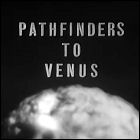 British broadcaster ABC premieres the first episode of Pathfinders To Venus, a follow-up series to Pathfinders In Mars, produced by future Doctor Who creator Sydney Newman. George Colouris and Gerald Flood (City Beneath The Sea) star; the script is written by Malcolm Hulke (Doctor Who) and Eric Paice (Star Maidens). Though the original master tape of this episode was later wiped for reuse, film recordings of all eight episodes will be recovered and released on DVD in the 21st century.
British broadcaster ABC premieres the first episode of Pathfinders To Venus, a follow-up series to Pathfinders In Mars, produced by future Doctor Who creator Sydney Newman. George Colouris and Gerald Flood (City Beneath The Sea) star; the script is written by Malcolm Hulke (Doctor Who) and Eric Paice (Star Maidens). Though the original master tape of this episode was later wiped for reuse, film recordings of all eight episodes will be recovered and released on DVD in the 21st century.
This series is not yet chronicled in the LogBook. You could join theLogBook team and write this guide or support the webmaster’s efforts to expand the site.

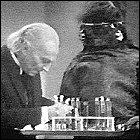 The 107th episode of Doctor Who airs on the BBC. This is part two of the story now collectively known as
The 107th episode of Doctor Who airs on the BBC. This is part two of the story now collectively known as  The 24th episode of the time travel sitcom It’s About Time, created by Sherwood Schwarz (I Dream Of Jeannie) and starring Frank Aletter, Jack Mullaney, and Imogene Coca, is broadcast on CBS. Alan DeWitt guest stars.
The 24th episode of the time travel sitcom It’s About Time, created by Sherwood Schwarz (I Dream Of Jeannie) and starring Frank Aletter, Jack Mullaney, and Imogene Coca, is broadcast on CBS. Alan DeWitt guest stars.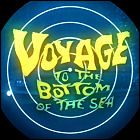 The 82nd episode of Irwin Allen’s adventure series Voyage To The Bottom Of The Sea airs on ABC, starring Richard Basehart and David Hedison. Michael Dunn (Star Trek: Plato’s Stepchildren) guest stars.
The 82nd episode of Irwin Allen’s adventure series Voyage To The Bottom Of The Sea airs on ABC, starring Richard Basehart and David Hedison. Michael Dunn (Star Trek: Plato’s Stepchildren) guest stars. Future Star Trek: Enterprise co-star Jolene Blalock is born in California. After a career in modeling, she will move into acting, with her role as Enterprise’s resident Vulcan crew member T’Pol standing out as her most recognized work. She will also appear in such TV series as Legend Of The Seeker, G vs. E and Stargate SG-1.
Future Star Trek: Enterprise co-star Jolene Blalock is born in California. After a career in modeling, she will move into acting, with her role as Enterprise’s resident Vulcan crew member T’Pol standing out as her most recognized work. She will also appear in such TV series as Legend Of The Seeker, G vs. E and Stargate SG-1. The
The 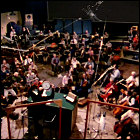 At Anvil Studios in Denham, England, John Williams and the London Symphony Orchestra convene for the first recording session for the Star Wars soundtrack. Over the course of the next 11 days, and with director George Lucas in attendance in the recording booth, all of the music for Lucas’ movie is rehearsed and recorded. Williams and Lucas had been introduced by their mutual friend Steven Spielberg, with whom Williams had worked on 1975’s Jaws (whose score had gone on to win Williams his second Oscar); Lucas’ original plan was to “score” Star Wars entirely with classical pieces. The first scene scored by Williams and the LSO is the rapid-fire chase through the Death Star, culminating in Luke and Princess Leia swinging across a chasm; other pieces recorded on the first day include the death of Obi-Wan Kenobi and the iconic theme music.
At Anvil Studios in Denham, England, John Williams and the London Symphony Orchestra convene for the first recording session for the Star Wars soundtrack. Over the course of the next 11 days, and with director George Lucas in attendance in the recording booth, all of the music for Lucas’ movie is rehearsed and recorded. Williams and Lucas had been introduced by their mutual friend Steven Spielberg, with whom Williams had worked on 1975’s Jaws (whose score had gone on to win Williams his second Oscar); Lucas’ original plan was to “score” Star Wars entirely with classical pieces. The first scene scored by Williams and the LSO is the rapid-fire chase through the Death Star, culminating in Luke and Princess Leia swinging across a chasm; other pieces recorded on the first day include the death of Obi-Wan Kenobi and the iconic theme music. The
The 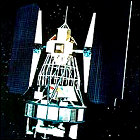 NASA launches Landsat 3, the latest in a constellation of satellites derived from the design of the experimental Nimbus weather satellites. This is the last Landsat to use the Nimbus framework, and the last to be managed exclusively by NASA; Landsat 3 remains in service through 1983.
NASA launches Landsat 3, the latest in a constellation of satellites derived from the design of the experimental Nimbus weather satellites. This is the last Landsat to use the Nimbus framework, and the last to be managed exclusively by NASA; Landsat 3 remains in service through 1983.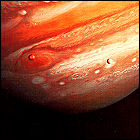 The unmanned NASA/JPL space probe Voyager 1 makes its closest approach to the giant planet Jupiter, a little over 200,000 miles away. While Voyager’s higher-resolution cameras trump any of the Pioneer images of Jupiter, the real revelation proves to be Jupiter’s four largest moons, revealing a smooth-but-cracked icy surface on Europa, craters on Ganymede and Callisto, and the colorful mountains of Io, whose biggest secret goes undiscovered until a few days after Voyager 1’s closest flyby.
The unmanned NASA/JPL space probe Voyager 1 makes its closest approach to the giant planet Jupiter, a little over 200,000 miles away. While Voyager’s higher-resolution cameras trump any of the Pioneer images of Jupiter, the real revelation proves to be Jupiter’s four largest moons, revealing a smooth-but-cracked icy surface on Europa, craters on Ganymede and Callisto, and the colorful mountains of Io, whose biggest secret goes undiscovered until a few days after Voyager 1’s closest flyby.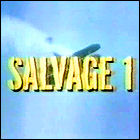 The sixth episode of the series Salvage 1 airs on ABC, starring Andy Griffith, Joel Higgins (Silver Spoons), and Trish Stewart. Richard Jaeckel (Spenser For Hire) and Severn Darden (Battle For The Planet Of The Apes) guest star.
The sixth episode of the series Salvage 1 airs on ABC, starring Andy Griffith, Joel Higgins (Silver Spoons), and Trish Stewart. Richard Jaeckel (Spenser For Hire) and Severn Darden (Battle For The Planet Of The Apes) guest star.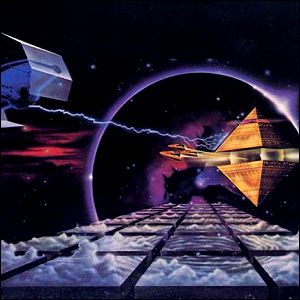 Atari releases the computer game Star Raiders for the Atari 400 and 800 home computer systems, programmed by Doug Neubauer. This is a very early example of a game in the first-person “cockpit” space shooter genre gaining wide popularity.
Atari releases the computer game Star Raiders for the Atari 400 and 800 home computer systems, programmed by Doug Neubauer. This is a very early example of a game in the first-person “cockpit” space shooter genre gaining wide popularity.  Attempting to build a TV franchise onto the 1973 hit movie Westworld, the
Attempting to build a TV franchise onto the 1973 hit movie Westworld, the 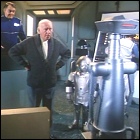 NBC airs the
NBC airs the 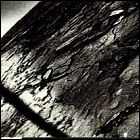 The Soviet Union’s unmanned Venera 14 space probe successfully lands on the planet Venus, its landing module enduring almost an hour in temperatures of nearly 900 degrees Fahrenheit and air pressure nearly 100 times that experienced at sea level on Earth. A soil sampling experiment is thwarted by an unforseen problem, namely the lens cap of Venera 14’s camera popping off and landing precisely where its sampling arm was designed to gather Venusian soil for testing.
The Soviet Union’s unmanned Venera 14 space probe successfully lands on the planet Venus, its landing module enduring almost an hour in temperatures of nearly 900 degrees Fahrenheit and air pressure nearly 100 times that experienced at sea level on Earth. A soil sampling experiment is thwarted by an unforseen problem, namely the lens cap of Venera 14’s camera popping off and landing precisely where its sampling arm was designed to gather Venusian soil for testing.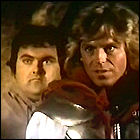 CBS airs
CBS airs 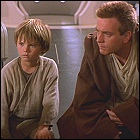 Actor Jake Lloyd, who will gain fame as the face of the young Anakin Skywalker in
Actor Jake Lloyd, who will gain fame as the face of the young Anakin Skywalker in 
 The
The 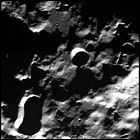 Though its extended mission was cut short by a mishap in 1994, NASA’s ill-fated Clementine lunar orbiter returned data with significant implications for further manned visits to the moon. NASA announces that craters near the north and south poles of Earth’s moon may harbor enough water ice to allow long-term colonization, and could also be used to create propellant on-site. While this promising announcement occurs as the 30th anniversary of the first manned moon landing approaches, any further manned visits exist strictly on paper.
Though its extended mission was cut short by a mishap in 1994, NASA’s ill-fated Clementine lunar orbiter returned data with significant implications for further manned visits to the moon. NASA announces that craters near the north and south poles of Earth’s moon may harbor enough water ice to allow long-term colonization, and could also be used to create propellant on-site. While this promising announcement occurs as the 30th anniversary of the first manned moon landing approaches, any further manned visits exist strictly on paper.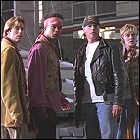 Pay cable channel Showtime premieres the
Pay cable channel Showtime premieres the 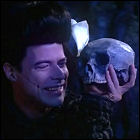 Sci-Fi Channel premieres
Sci-Fi Channel premieres 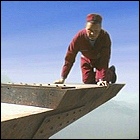 Sci-Fi Channel premieres
Sci-Fi Channel premieres 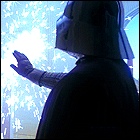 An unusual paralyzing condition strikes actor David Prowse, first leaving one of his arms paralyzed and then his back, robbing him of his ability to walk. Prowse, who portrayed Darth Vader in the original Star Wars trilogy, has made numerous other larger-than-life appearances (including a brief guest shot as the legendary Minotaur in a 1972 episode of Doctor Who), and has lately been a frequent guest on the convention circuit. A spokesman for Mr. Prowse says that doctors have ruled out a stroke as the cause of his condition, but still have yet to identifty what exactly has happened.
An unusual paralyzing condition strikes actor David Prowse, first leaving one of his arms paralyzed and then his back, robbing him of his ability to walk. Prowse, who portrayed Darth Vader in the original Star Wars trilogy, has made numerous other larger-than-life appearances (including a brief guest shot as the legendary Minotaur in a 1972 episode of Doctor Who), and has lately been a frequent guest on the convention circuit. A spokesman for Mr. Prowse says that doctors have ruled out a stroke as the cause of his condition, but still have yet to identifty what exactly has happened. 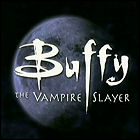 The 116th episode of Joss Whedon’s supernatural series Buffy The Vampire Slayer, starring Sarah Michelle Gellar, airs on UPN. James Marsters, Anthony Stewart Head, and Alyson Hannigan also star.
The 116th episode of Joss Whedon’s supernatural series Buffy The Vampire Slayer, starring Sarah Michelle Gellar, airs on UPN. James Marsters, Anthony Stewart Head, and Alyson Hannigan also star. The
The 
 The 151st episode of Stargate SG-1 airs on the Sci-Fi Channel, starring Richard Dean Anderson, Amanda Tapping, Michael Shanks, and Christopher Judge.
The 151st episode of Stargate SG-1 airs on the Sci-Fi Channel, starring Richard Dean Anderson, Amanda Tapping, Michael Shanks, and Christopher Judge. The
The  BBC2 airs the
BBC2 airs the